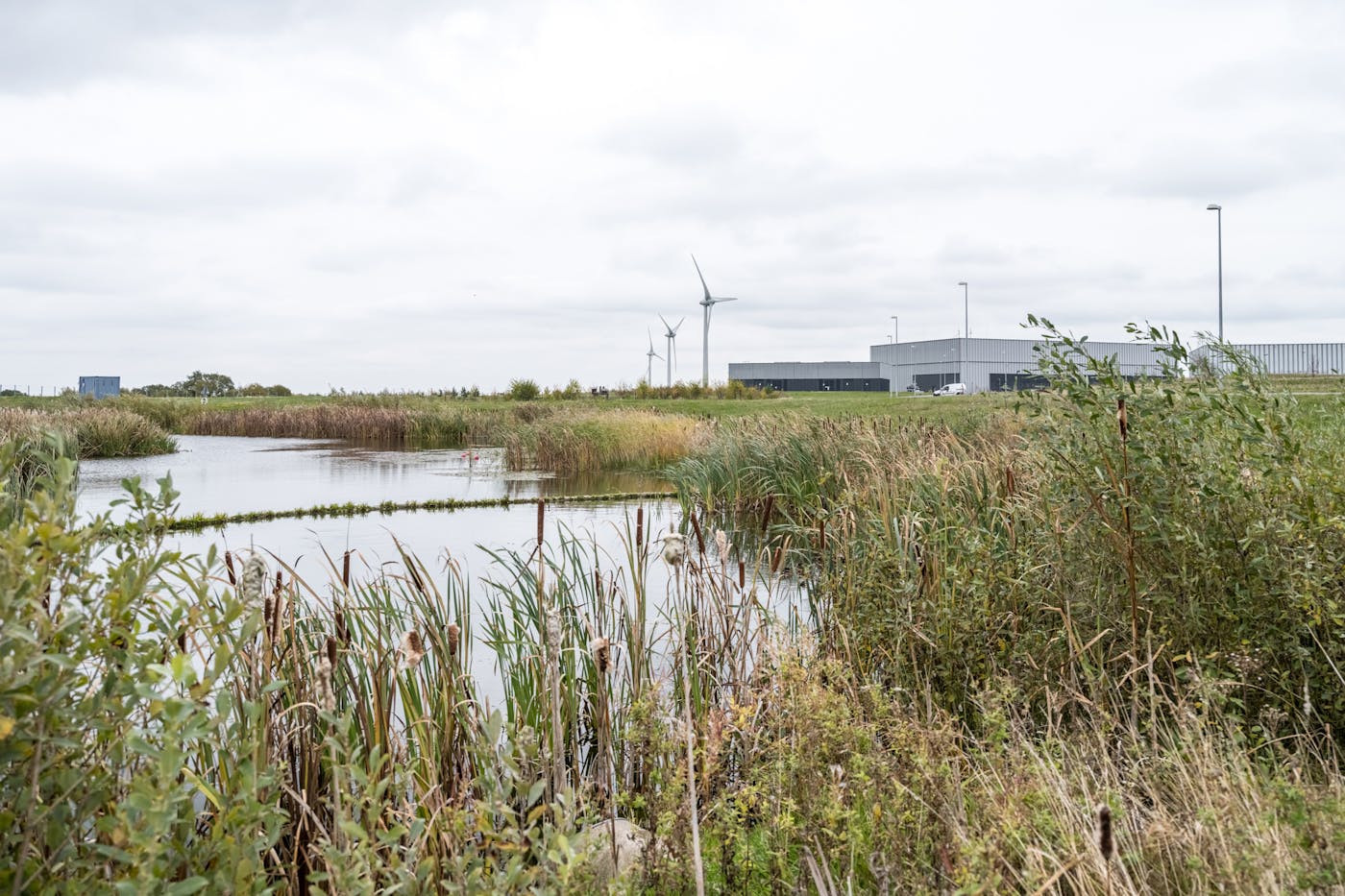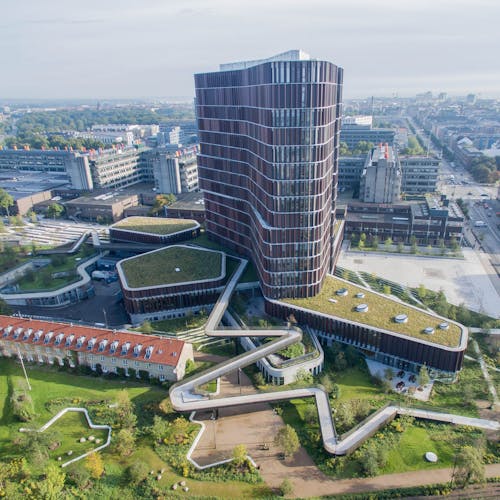ESS — European
Spallation Source
A nature-based 'fenceless' landscape with specially designed sunken ‘ha-ha’ ditches and diverse vegetation that keeps the facility secure without losing the feeling of openness.
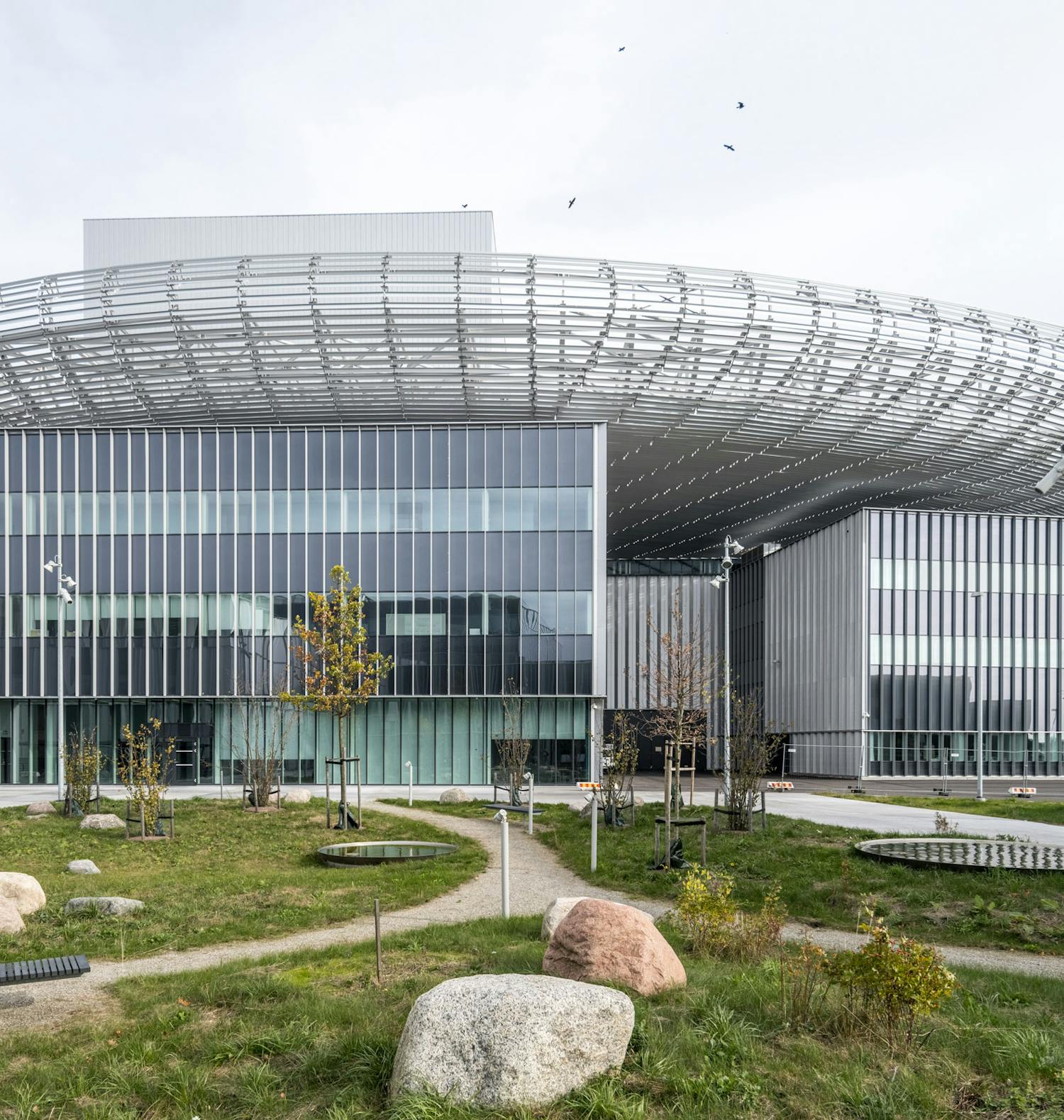
Location
Lund, Sweden
Size
74 hectares
Year
2013 — 2022
Client
European Spallation Source ESS AB
Role
Lead Landscape Architect – from competition to project proposal
Partners & Collaborators
Henning Larsen Architects, COBE, Buro Happold, NNE Pharmaplan, Transsolar,
Challenges
Typology
The ESS – European Spallation Source is a pan-European multidisciplinary research facility based on the world’s most powerful neutron source.
We have designed the landscape surrounding the ESS to give the public an insight into the fascinating world of science and neutron physics without compromising on biodiversity, quality, or safety.
The 74-ha landscape is designed with high-security needs in mind while creating a varied landscape with several amenities for employees and visitors and natural climate adaptation.
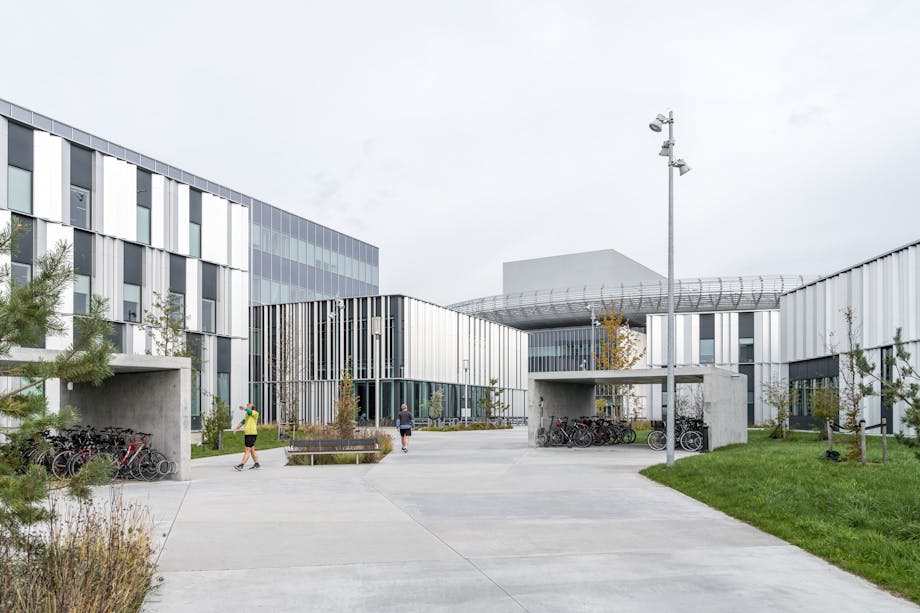
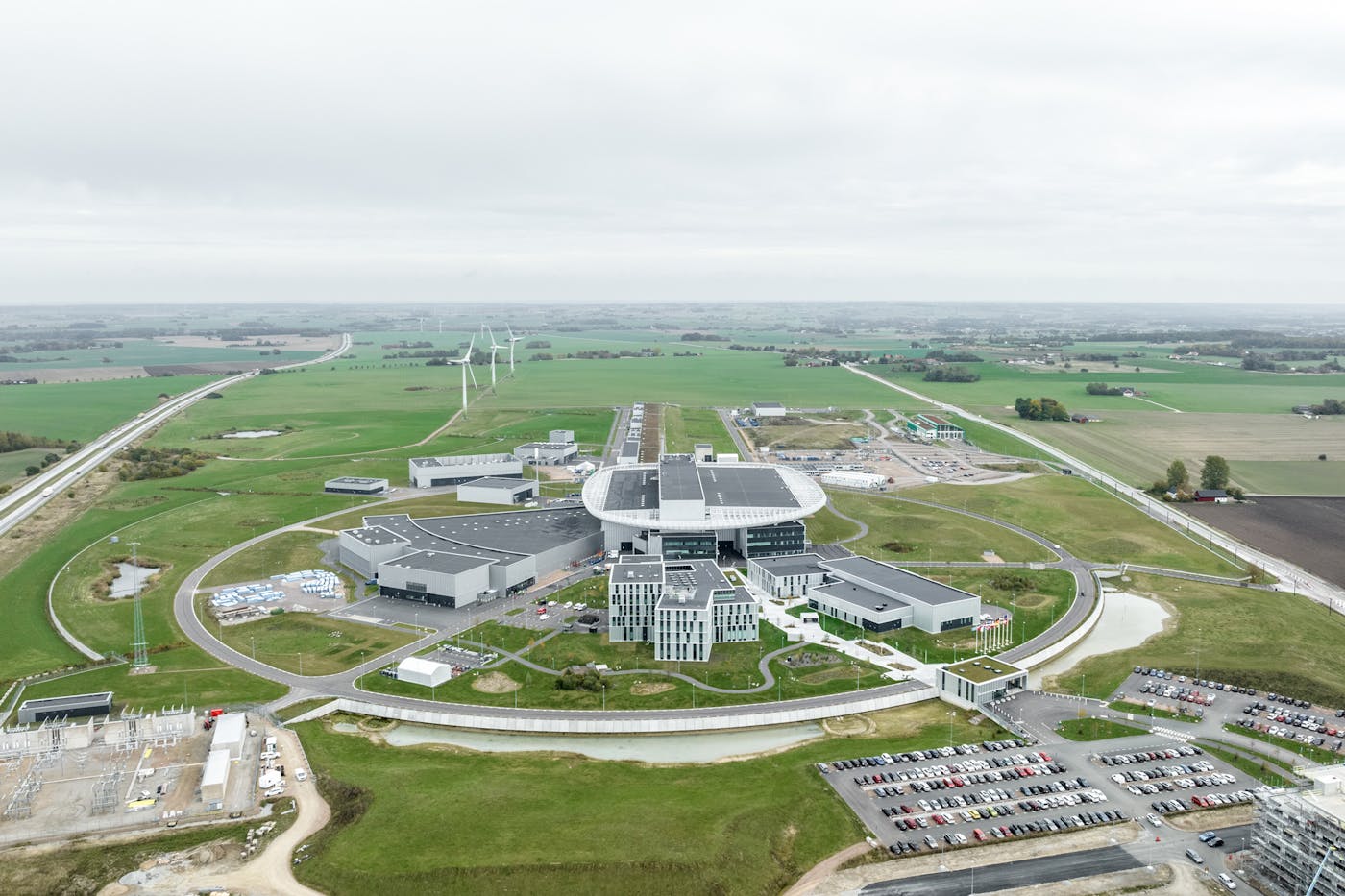
To solve the security challenges of this state-of-the-art research environment without compromising on the quality of the recreational areas, we have designed a varied landscape that secures the site by means of planting, creating wetlands, and terrain drops. A regulated terrain and wild-growing vegetation are combined with sunken ha-ha fences, creating spatial distinctions and security barriers.
“From the very beginning, our goal has been to address the challenge of creating a highly secure landscape without compromising on openness, social amenities, and biodiversity. By seamlessly integrating security measures with landscape qualities, ESS’s expansive landscape provides a secure framework for the institution while offering the public a unique glimpse into the fascinating world of science. Through its new topography and variety of natural habitats such as meadow, marsh, and wetland, we have created a campus with natural rainwater management, new habitats for wildlife and insects, and rich nature experiences for the employees. It is a living landscape that will make the land-art character of ESS grow more and more distinct every year,” says Mette Skjold, Partner and CEO, SLA.
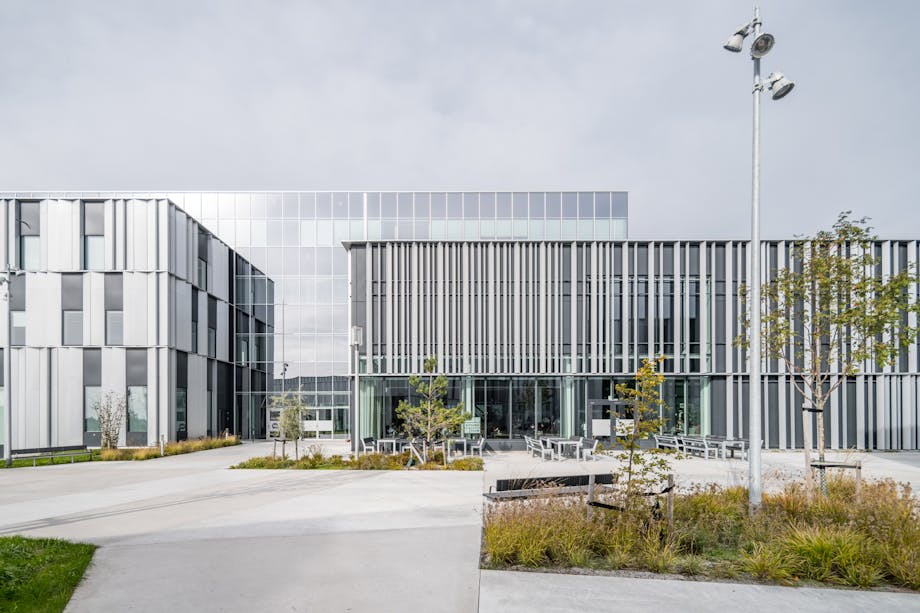
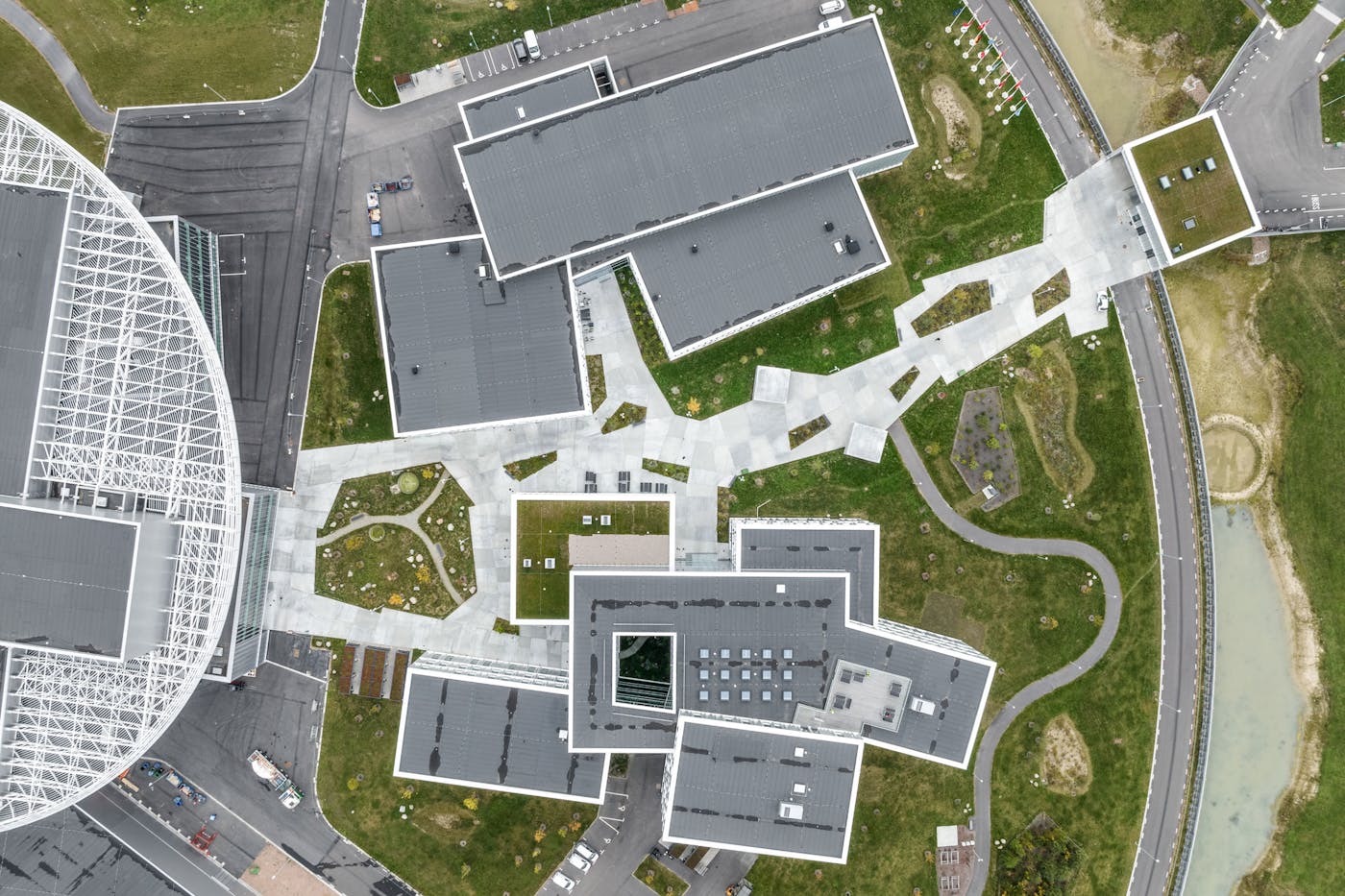
The ESS is home to the most powerful neutron source on the planet, and researchers from material science, chemistry, biology, and physics will use the 120,000 m2 research facility. Its primary purpose is to produce neutrons that scientists can use to study materials’ atomic and molecular structures. The information gathered with instruments inside ESS will help propose solutions to society’s most pressing issues, including new materials, energy, health, and the environment.
The accelerator is below ground, housed in a tunnel within the landscape. Disguised beneath a rampart of soil, a building known as the ‘klystron gallery’ sits above the accelerator – only visible as a wall on one side: on the other, the building blends into the Swedish landscape, appearing to be a meadow.
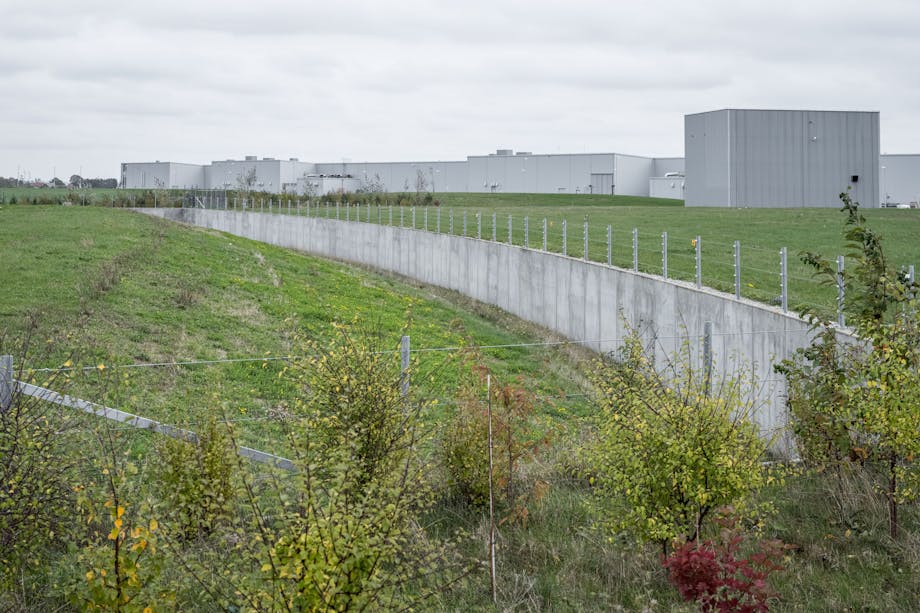
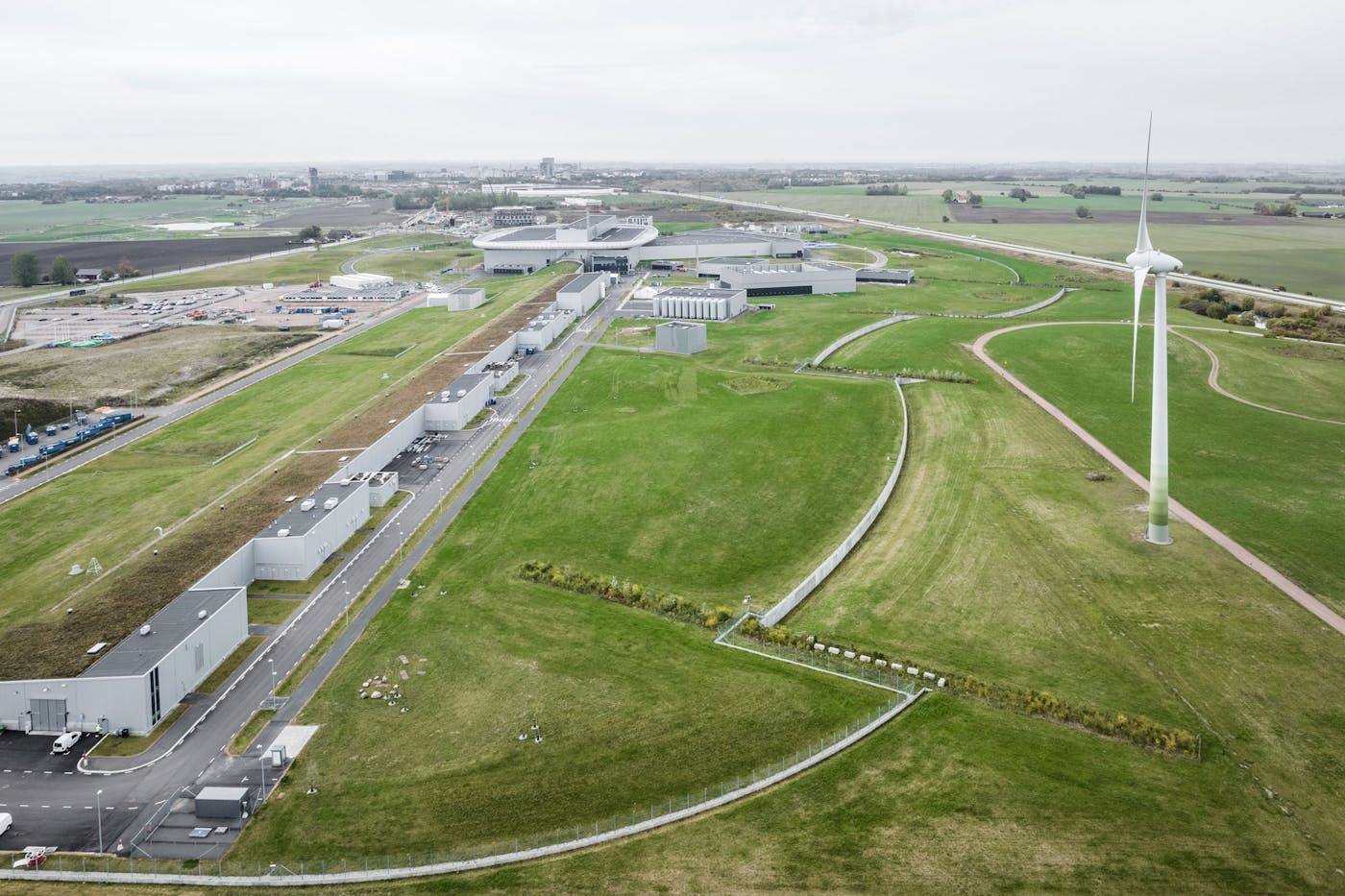
The landscape around ESS is designed with diversified vegetation, which improves biodiversity, ensures the microclimate, and adds spacious qualities to the area. All the rainwater from ESS is handled naturally in the park, which is transformed into wetlands consisting of lakes, bogs, and meadows. The wetlands create a living and variable visual connection between ESS and its surroundings.
